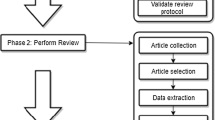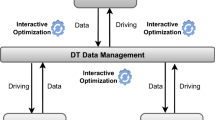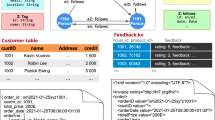Abstract
When integrating the views of a large telecomunications application database at Bellcore, it was found that some pairs of view objects had significant structural similarities but differed semantically.+ This observation motivated the design of the structural integration methodology described in this article. Currently existing view and schema integration methodologies are based on semantic considerations. They allow integration only if two objects agree in their semantic and structural aspects. Structural integration permits the integration of objects even if they differ semantically. This article introduces structural integration for the case of full structural correspondence. We further develop an important special case, namely structural integration for classes with attribute partial correspondence. We use a subschema of the telecommunications application to demonstrate the applicability of structural integration to situations involving the complexities of real-world databases and applications. Algorithms for checking full structural correspondence of classes and databases are presented. Structural integration has several advantages, including the identification of shared common structures that are important for sharing of data and methods.
Similar content being viewed by others
References
A. Aho, J. Hopcroft, and J. Ullman, “Data structures and algorithms”, Addison Wesley: Reading, MA, 1987.
C. Batini, M. Lenzerini, and S. Navathe, “A comparative analysis of methodologies for database schema integration”, ACM Computing Surveys, vol. 18, no. 4, pp. 323–364, December 1986.
M. Brodie, “On the development of data models”, On Conceptual Modeling, Springer Verlag, 1984.
M. L. Brodie, and F. Manola,Database Management.: A Survey. Readings in Artificial Intelligence and Databases, J. Mylopoulos and M. L. Brodie (Eds.), Morgan Kaufmann Publishers: San Mateo, CA, 1989.
U. Dayal, and H. Hwang, “View definition and generalization for database integration in a multidatabase system”.IEEE Trans. on Soft. Eng., SE-10, 6 (Nov.) pp. 628–644, 1984.
R. Elmasri, and S. Navathe,Fundamentals of Database Systems, Benjamin/Cummings: Redwood City, CA, 1989
D. Fishman, et al., “IRIS: An object-oriented DBMS”,ACM Trans. on Office Info. Syst., vol 4, no. 2, April 1987.
J. Geller, A. Mehta, Y. Perl, E. Neuhold, and A. Sheth, Algorithms for Structural Schema Integration,Second International Conference for Systems Integration, Morristown, NJ, pp. 604–614, 1992.
J. Geller, Y. Perl, P. Cannata, A. Sheth, and E. Neuhold, “A case study of stuctural integration”,Proceedings of the First International Conference on Information and Knowledge Management, Baltimore, MD, pp. 102–111, November 1992.
J. Geller, Y. Perl, and E.J. Neuhold, “Structure and semantics in OODB class specifications”, SIGMOD RECORD, vol. 20, no. 4, pp. 40–43, 1991.
J. Geller, Y. Perl, E.J. Neuhold, and A. Sheth, “Structural schema integration with full and partial correspondence using the Dual Model”Information Systems, vol. 17, no. 6, pp. 443–464, 1992.
M. Gyssens, J. Paredaens, and D.V. Gucht, “A graph-oriented object model for database end-users interfaces”, Proceedings of the ACM SIGMOD Conference, Atlantic City, pp. 24–33, 1990
A. Goldberg, and D. Robson,Smalltalk-80: The Language and its Implementation, Addison Wesley: Reading, MA 1983.
M. Halper, J. Geller, Y. Perl, and E. Neuhold, “A graphical schema representation for object-oriented databases”,First International Workshop on Interfaces to Database Systems (IDS-92) Glasgow, Scotland, 1992 (to be published by Springer Verlag).
W. Kim, “Research direction for integrating heterogeneous databases”,1989 Workshop on Heterogeneous Databases, Chicago, IL, December 1989.
W. Klas, “A metaclass system for open object-oriented data models”,Ph. D. dissertation., Technical University of Vienna, Austria, 1990.
W. Klas, E. J. Neuhold, R. Bahlke, K. Drosten, P. Fankhauser, M. Kaul, P. Muth, M. Oheimer, T. Rakow, and V. Turau, “VML design specification document”,Tech Report, GMD-IPSI, Germany, 1992.
W. Klas, E.J. Neuhold, and M. Schrefl, “On an object-oriented data model for a knowledge base”, InResearch into Networks and Distributed Applications-EUTECO 88, R. Speth (Ed.), North-Holland, 1988.
C. Lecluse, and P. Richard, “Modeling inheritance and genericity in object-oriented databases”,LNCS #326, ICOT, Japan, pp. 223–237, 1988.
E.J. Neuhold, J. Geller, Y. Perl, and V. Turau, “A theoretical underlying Dual Model for knowledge-based systems”,Proc. of the first Intl. Conf. on Systems Integration, Morristown, NJ, pp. 96–103, 1990.
E.J. Neuhold, Y. Perl, J. Geller, and V. Turau, “Separating structural and semantic elements in object-oriented knowledge bases”,Proc. of the Advanced Database System Symposium, Kyoto, Japan, pp. 67–74, 1989.
E.J. Neuhold, Y. Perl, J. Geller, and V. Turau, “The Dual Model for object-oriented data bases”, New Jersey Inst. of Tech.,Tech Report CIS-91-30, 1991.
F. Saltor, “On the power to derive external schemata form the database schema”,Proc. of the 2nd IEEE Int. Conf. on Data Engineering, Los Angeles, CA, 1986.
A. Sheth, “Issues in schema integration: Perspective of an industrial researcher”, presented atARO Workshop on Heterogeneous Databases, Philadelphia, PA, September 1991.
A. Sheth, and J. Larson, “Federated database systems for managing distributed heterogeneous, and autonomous databases”,ACM Computing Surveys, pp. 183–236, September 1990.
G.L. Steele, Jr.,Common LISP-The Language, Second Edition, Digital Press: Bedford, MA, 1990.
Author information
Authors and Affiliations
Additional information
This research has been supported partially by grants from the Center for Manufacturing Systems at New Jersey Institute of Technology and from Bellcore
Rights and permissions
About this article
Cite this article
Geller, J., Perl, Y., Cannata, P. et al. Structural integration: Concepts and case study. Journal of Systems Integration 3, 133–161 (1993). https://doi.org/10.1007/BF01974954
Received:
Revised:
Issue Date:
DOI: https://doi.org/10.1007/BF01974954




